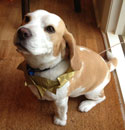 Last week was something of a trial: bits of my little farm were being washed out to sea, tracks were eroding, and our road was closed by slips and rockfalls. Just another in a sequence of extreme weather events that have got the locals in North Canterbury wondering about the weird weather being inflicted on them. In my Daily Blog post this week — You Ain’t Seen Nothing Yet — I note that worse is on the way, and there’s little we can do beyond battening down the hatches.
Last week was something of a trial: bits of my little farm were being washed out to sea, tracks were eroding, and our road was closed by slips and rockfalls. Just another in a sequence of extreme weather events that have got the locals in North Canterbury wondering about the weird weather being inflicted on them. In my Daily Blog post this week — You Ain’t Seen Nothing Yet — I note that worse is on the way, and there’s little we can do beyond battening down the hatches.
Tag: Waipara
I think it’s going to rain today (when it’s wet, it’s very very wet)
 I took Rosie the truffle machine for a walk around the farm just before dark yesterday. We were both a bit stir-crazy after four days of cold, cold rain and a couple of days of screaming southerlies that brought snow to our hills. The ground passed field capacity at the beginning of last week, when an atmospheric river brought torrential downpours and flooding to much of the South Island. Now the soil is sodden, quivering with water and oozing mud at every footstep. Every drop of extra rain is taking that mud and sluicing it down to the river. A stream runs through my black truffle plantation. I spent this afternoon digging a drainage trench. Truffles don’t enjoy sitting in water. My crop might rot. The Waipara is roaring along at the bottom of our cliff at about 50 cumecs ((Cubic metres per second.)), an impressive sight for a river that normally dribbles down to the sea at under a cumec. It peaked last week at about 110 cumecs. The riverbed will have been reshaped. But we got off lightly.
I took Rosie the truffle machine for a walk around the farm just before dark yesterday. We were both a bit stir-crazy after four days of cold, cold rain and a couple of days of screaming southerlies that brought snow to our hills. The ground passed field capacity at the beginning of last week, when an atmospheric river brought torrential downpours and flooding to much of the South Island. Now the soil is sodden, quivering with water and oozing mud at every footstep. Every drop of extra rain is taking that mud and sluicing it down to the river. A stream runs through my black truffle plantation. I spent this afternoon digging a drainage trench. Truffles don’t enjoy sitting in water. My crop might rot. The Waipara is roaring along at the bottom of our cliff at about 50 cumecs ((Cubic metres per second.)), an impressive sight for a river that normally dribbles down to the sea at under a cumec. It peaked last week at about 110 cumecs. The riverbed will have been reshaped. But we got off lightly.
Over the last couple of days the New Zealand news has been dominated by extreme weather. The southerly storm that soaked us also battered Wellington and brought deep snow ((The Mt Hutt ski field got 2.8 meters of snow — just over 9 feet in the old money — a record start to the season. Take a look at the green line on their snow graph to get some sense of the context.)) to much of the South Island. It made for compelling pictures. But what’s going on elsewhere in the world is even more dramatic:
Continue reading “I think it’s going to rain today (when it’s wet, it’s very very wet)”
NZ climate policy shambles, and other summer reading
 It’s summer down south, and New Zealand’s politicians have embarked on their summer break. It’s summer in Waipara too, and with yesterday topping 30ºC and today heading in the same direction, your blogger has immediate climate concerns of an irrigation and vine management nature to attend to. So, with apologies for what may turn out to be less frequent posting over the next few weeks, here’s a quick round-up of stuff worth reading.
It’s summer down south, and New Zealand’s politicians have embarked on their summer break. It’s summer in Waipara too, and with yesterday topping 30ºC and today heading in the same direction, your blogger has immediate climate concerns of an irrigation and vine management nature to attend to. So, with apologies for what may turn out to be less frequent posting over the next few weeks, here’s a quick round-up of stuff worth reading.
The NZ government will be relieved to be heading to the beaches after being battered by a hail of criticism for their climate policies over the last week. Brian Fallow, the NZ Herald‘s economics editor, was especially direct in his dissection of NZ’s climate policy settings post-Doha:
The Government’s climate change policy is a shambles and a disgrace. Unless, that is, you are happy for the costs of the inevitable adjustment to a low-carbon future to be needlessly increased and pushed onto the young, in which case it is doing a great job.
Gareth Morgan joined in, calling for the government to come clean about what its policies really mean:
Continue reading “NZ climate policy shambles, and other summer reading”
Nice weather for ducks
 A couple of days ago, NIWA published its climate summary for 2008 — a comprehensive overview of all the weather events that went together to make last year what it was. In general, 2008 was sunny and warm for New Zealand, but with many notable extreme weather events — a “rollercoaster” of a year, according to NIWA principal scientist Jim Renwick (who’s been a guest poster here). The Herald picked up on the rollercoaster reference, but Stuff latched on to something else Jim said:
A couple of days ago, NIWA published its climate summary for 2008 — a comprehensive overview of all the weather events that went together to make last year what it was. In general, 2008 was sunny and warm for New Zealand, but with many notable extreme weather events — a “rollercoaster” of a year, according to NIWA principal scientist Jim Renwick (who’s been a guest poster here). The Herald picked up on the rollercoaster reference, but Stuff latched on to something else Jim said:
[…] Renwick said the extremes could be a preview of how global climate change would affect New Zealand weather. “I am not saying 2008 was a result of climate change, but we should expect to see more years like that,” he said. “The idea of a sunny year, but with some pretty violent storms, is consistent with climate change. We should expect to see more of those rainfall extremes.”
The last time I looked at my weather records was last February. After musing on a heavy rain event, my comment then was “if you were to ask me what will Canterbury’s climate be like in 2030, I’d have to answer – just like this summer…” For our property in the Waipara Valley, 2007 was a dry year — only 496 mm of rain. 2008 was much wetter: 809 mm in the year, 10% over the average for the last 11 years, and the second wettest in my record. That’s been good news.
However, when I look back at the year, nearly 40% of that rain came in just three events — a big fall in February to break the dry spell, and then two big storms in late July and August, the latter severe enough to cause dramatic flooding in the region. Roughly 320 mm fell in those three events. I had to wash mud out of the garage three times, dig a drainage trench through the truffiere (truffles don’t like drowning), gullies eroded, the road slumped, and the Waipara River lowered its bed by half a metre in places.
Take away those big storms, and we had only 489 mm for the year — a dry year by my standards. Over the ten years up to 2008, we had a total of three comparable heavy rain events (Aug 2000, Jan 2002 and Sept 2003), and then like London buses, three came along at once.
What does this prove? Precisely nothing. I don’t have records going back far enough to know whether there’s any sort of statistical significance in 2008’s North Canterbury rainstorms. But… remember what Jim said earlier? The impact of global warming on the east coast of NZ is expected to increase the frequency of drought, but because warming also means more water vapour in the atmosphere — more “fuel” for weather — when rain does fall, it could come in floods. So if you were to ask me what Canterbury’s climate will be like in twenty year’s time, I’d have to answer – just like last year.
Solar wind sculptures
 Time to nail my colours to the tall thing. Submissions on Mainpower’s Mt Cass windfarm consent application close on August 1st, and I’m running out of time to get one in (being busy, and all that). The opposition is getting itself organised, with a web site to co-ordinate dissenters, including a very nice gallery of pictures. I know (and love) this sort of landscape. I live in it.
Time to nail my colours to the tall thing. Submissions on Mainpower’s Mt Cass windfarm consent application close on August 1st, and I’m running out of time to get one in (being busy, and all that). The opposition is getting itself organised, with a web site to co-ordinate dissenters, including a very nice gallery of pictures. I know (and love) this sort of landscape. I live in it.
I have some sympathy for the guys running the site, because I organised/designed/published the “Dump The Dump” web site for opponents of the Kate Valley landfill scheme. We lost, despite generating a record number of opposing submissions. I even did a presentation to the consent hearing, and got a mention in the final judgement. I still think we could have defeated the dump if we’d taken the issue to Christchurch, rather than kept it local and “played by the rules”…
